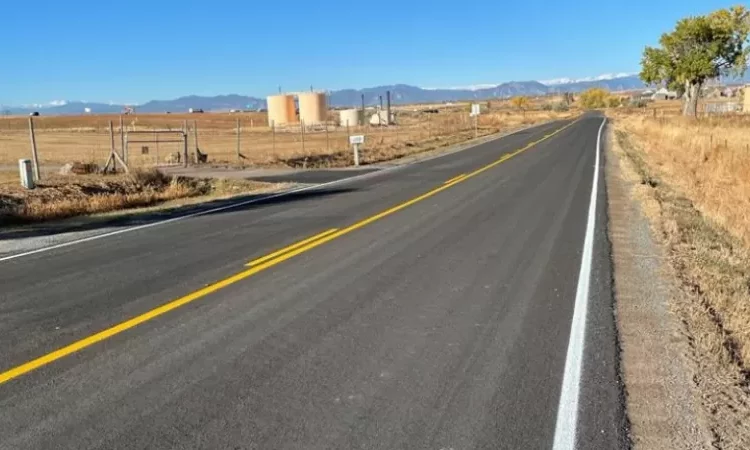
K31-APS nanotech to help RHD build 100km road
K31-APS nanotech to help RHD build 100km road
A state of art echo-friendly nanotech is expected to enable Roads and Highways Department (RHD) and other such organisations to build 100 kilometer extra-durable roads in a month, drastically reducing construction costs as well, experts and officials said.
They said “acrylic polymer” emerged as part of nanotechnology to reduce road construction costs by at least 30 per cent while the infrastructures would require minimal maintenance expenditure due to their sustainability.
“This appears as a wonderful technology, particularly for road construction, it is meant for 4IR (Fourth Industrial Revolution),” RHD’s Additional Chief Engineer Fazle Rabbe told BSS.
He added: “We can construct 100 kilometre road within one month using this nanotech product – the acrylic polymer”.
Rabbe said like plastics the “water-resistant” acrylic polymer is “nearly imperishable” which would simultaneously increase roads load-bearing capacity.
“So we expect it to enhance sustainability of our roads by at least 50 years and thus minimize their maintenance cost to a minimal level,” the RHD official said.
Rabbe said his comments were based on scientific findings of a six-member research team that he led to carry out an extensive ten-month study on the technology’s effectiveness and feasibility from April 2021 to January 2022.
Several infrastructure experts said the technology by now came within Bangladesh’s reach and it could be used also to construct dams and embankments at much lower costs in quicker periods.
RHD chief engineer AKM Manir Hossain Pathan said the department officially received the research findings and decided to reconfirm the acrylic polymer’s effectiveness through further testing.
“Thereafter we will arrange meetings with concerned stakeholders and then go for constructing roads using the acrylic polymer,” he added.
Experts, who were involved in Rabbe’s study team, said they had collected soil from 22 districts across Bangladesh and tested them in different ratios with K31 APS acrylic polymer at Matarbari area at Maheshkhali of Cox’s Bazar.
“We also ran a field test of the acrylic polymer at that area which showed the high effectiveness of the technology,” said Engineer Abul Hossain, a senior member of the research team.
Hossain, also the acting team leader of consultant firms involved in road infrastructure component of Matarbari Ultra Super Critical Coal-Fired Power Project, said they also carried out a cost analysis and found its high-cost effectiveness.
The organizations like RHD and Local Government Engineering Department (LGED) could save at least 20 per cent construction cost using the nanotech product, he said.
“It appeared very cheap, sustainable, and easy road construction method and soils in Bangladesh are also exceptionally suitable to be mixed with acrylic polymer,” Rabbe said.
He described it as a “durable and affordable road construction technique” and added that the team proposed the method be named as “Bangladesh Road Technology”.
Construction literature suggests that the acrylic polymer is currently being used in the United States, Canada, Australia, Malaysia and several Middle Eastern countries while India and Bhutan also started using it for road constructions.
One study team member said the Indian army successfully used the K31 APS brand of acrylic polymer in rugged Ladakh region of Kashmir, while the United States marine forces first developed the product to be used subsequently by US military and air force in their country and elsewhere.
The other members of the study team are: RHD component manager of the Matarbari project Engineer Md Shahriar Rumi, deputy project manager (RHD) Md Yunus Ali, project manager of road constructer Mir Akhter-WMCG JV Abu Sadat Sayem and K31 APS exclusive channel partner for Bangladesh Waliul Islam.
Explaining the technique Rabbe said in traditional method bricks and stone chips are used as main ingredient construct the road base and road sub-base but the use of acrylic polymer would make these major elements redundant.
“No stone or brick will be required in the process which means the new technology will develop of Bangladesh’s air quality reducing carbon emissions by abandoning the brick burning process,” he said.
Under the new technique, he said, a chemical reaction of acrylic polymer with sand and soil would create the foundation of roads and “you must also note that the bonding of the materials occurs very quickly in this method”.
“The chemical reaction creates a nano-polymerised grid which makes a special layer and having elastic properties this layer also prevents erosion, a usual problem seen in existing roads,” Rabbe said.
He added, “Mixed with soil and sand, acrylic polymer causes the chemical reaction to create the roads foundation (base and sub-base), which is far stronger than the traditional road infrastructure, strengthening road carpeting as well.”
Rabbe said the use of acrylic polymer would drastically reduce imported stones demand for road construction in the country and “nearly 70 per cent of the materials to be used for road construction under the method are available in the country”.
He said the surface layer of the roads could be built with the mixture of widely available thrown away plastic water bottles or pet bottles, polythene bags and locally produced bituminous to be mixed at a temperature from 160 to 170 degrees Celsius.
“This will save a huge amount of foreign currencies,” he said.